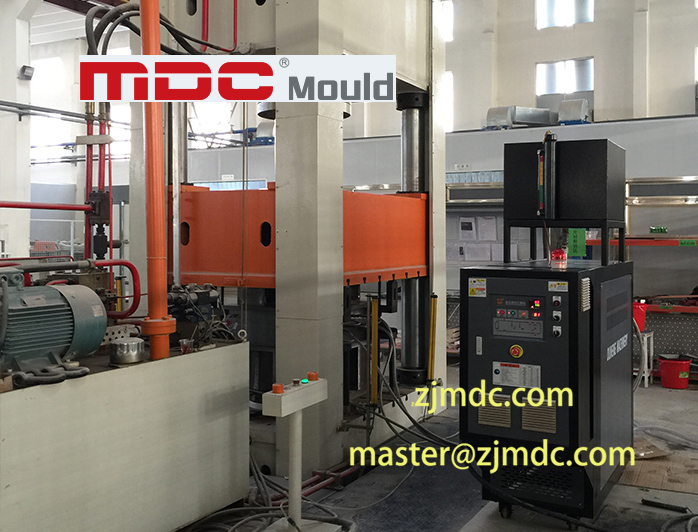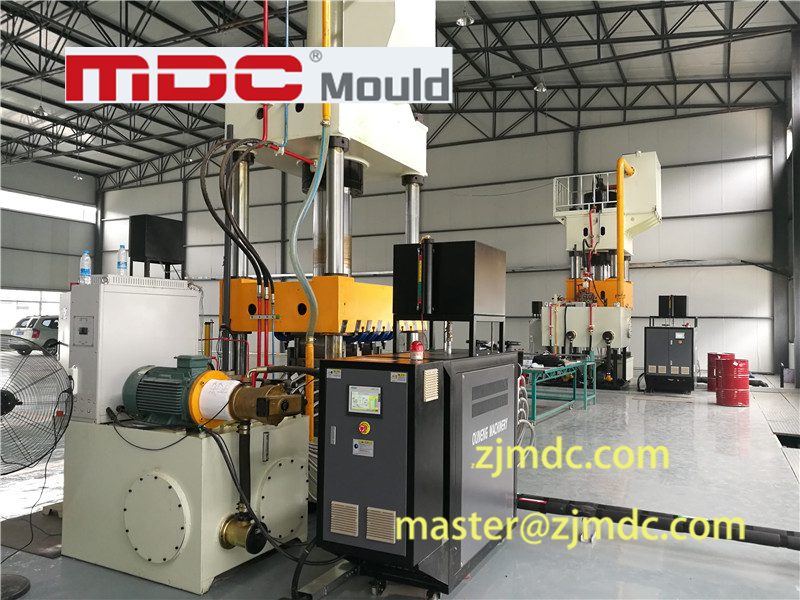
Specialize in Compression molds

Specialize in Compression molds
Compression molding is a molding process characterized by the use of a heated mold that is exposed to pressure. This compression molding process relies on pressure to completely fill the mold with plastic. In some cases, compression molding can use pressures of 1,000 to 2,000 pounds per square inch (PSI).
Compression molding pressure is the pressure applied to the material by a hydraulic press as the plastic is forced to fill the cavity and cure during compression molding. Compression molding pressure control includes control of the amount of compression molding pressure, timing of pressurization, and unloading and venting.
Compression molding pressure refers to the pressure per unit area of the horizontal projection of the product. Its role is to avoid bubbles, delamination, loose structure and other defects in the product. At the same time, it can also increase the fluidity of the material and facilitate the material to fill all corners of the mold cavity, so that the product structure is dense and the mechanical strength is improved.
The size of compression molding pressure depends on the material species and is related to the structure and shape of the product. For example, running a glass content of 17% to 20% will require less pressure to facilitate material flow than running a glass content of 40% to 50%. High glass content materials can be offset by adding a charge with greater coverage. For example, compression molding pressures are typically 30 to 50 MPa for phenolic molding compounds, 5 to 30 MPa for epoxy phenolic molding compounds, and 0.7 to 10 MPa for polyester-type molding compounds. carbon fiber reinforced polymers typically require 2 - 14 MPa, depending on the desired fiber density.
For complex structures and thicker wall thicknesses, the compression molding pressure should be increased. The more complex the structure of the product, the higher the required compression molding pressure. The larger or smaller the thickness of the product, the higher the required compression molding pressure. Products with high requirements for appearance and smoothness require higher compression molding pressure.
The size of compression molding pressure is also related to the structure of the mold, the compression molding pressure required for vertically parted molds is lower than that for horizontally parted molds. Molds with small gaps require higher compression molding pressure than molds with larger gaps.
The so-called pressurization timing refers to the appropriate pressurization operation under certain time and temperature conditions after the mold is installed. Unless the molded plastic used is stored for a long time or for some molded plastics and pre-compression molding blanks that have been pretreated under certain conditions. For most molding compounds, it is generally difficult to obtain the desired product by adding full pressure immediately after molding. This is especially true for some molding compounds that are suitable for slow compression molding. Therefore, the general rule is to add pressure slowly during closed pressurization, and then add pressure quickly to the specified pressure when it is about to close.
In addition, you need to be sure of both the timing of the pressurization and the timing of the temperature rise. If you pressurize too early, the resin curing cross-linking reaction degree is low and the material fluidity is large. Under the action of pressure, the material is easy to lose serious. Molded products are prone to resin agglomeration, or local lack of glue, fiber exposure and other defects. If the pressurization is too late, the resin will be cured and cross-linked to a large extent, and the material will not flow well, so it will not be easy to fill the mold, and the ideal products will not be obtained. Therefore, the timing of pressurization should be chosen reasonably.
The timing of pressurization depends on the type of molded material used, the quality index of molded material, the temperature of the mold and the rate of temperature rise and other factors. Only when the resin reaction is moderate, the viscosity caused by the increase in molecular weight increases moderately when the pressure is applied, so that the resin itself can flow under the heat pressure and at the same time make the fibers flow with the resin, so as to get the products that meet the requirements. In order to obtain the ideal molded products, usually through several test presses to determine the more appropriate time to pressurize.
The residual volatiles in the material, curing reaction released low-molecular compounds and material gaps containing air out of the process is called exhaust. The purpose of the exhaust is to ensure the compactness of the product, to avoid bubbles, delamination phenomenon. Whether the need for exhaust or multiple exhaust, according to the actual situation to determine quickly.
Generally, for the compression molding with large mold gap or less material volatiles, there is no exhaust. For some slow pressing speed of the molded material, due to the long heating time, volatiles are easier to exclude, generally do not need to use special exhaust measures. And some of the faster pressing speed of the molded material, generally need to take the exhaust measures.


In a word:
Materials with higher glass content will require greater pressure. The flatter and simpler the geometry, the less pressure will be required to compression mold the part. Ancillary techniques such as vacuum compression molding can also be used to quickly reduce mold cavity pressure during the pressing process.
MDC Mould uses high quality mold steel that is strong enough to withstand any compression molding pressure. With years of experience in compression mold making, a wide range of composite formulations and presses from 500T to 4000T, our one-stop solution will help you run your business smoothly.
Contact US
Email: master@zjmdc.com
Tel: +86 576 84616076
Fax: +86 576 84616079
Mobile: +86 13906573507(Mr. Wang)
Address: No.116 mochuang road, Huangyan Xinqian street,Taizhou,Zhejiang,China